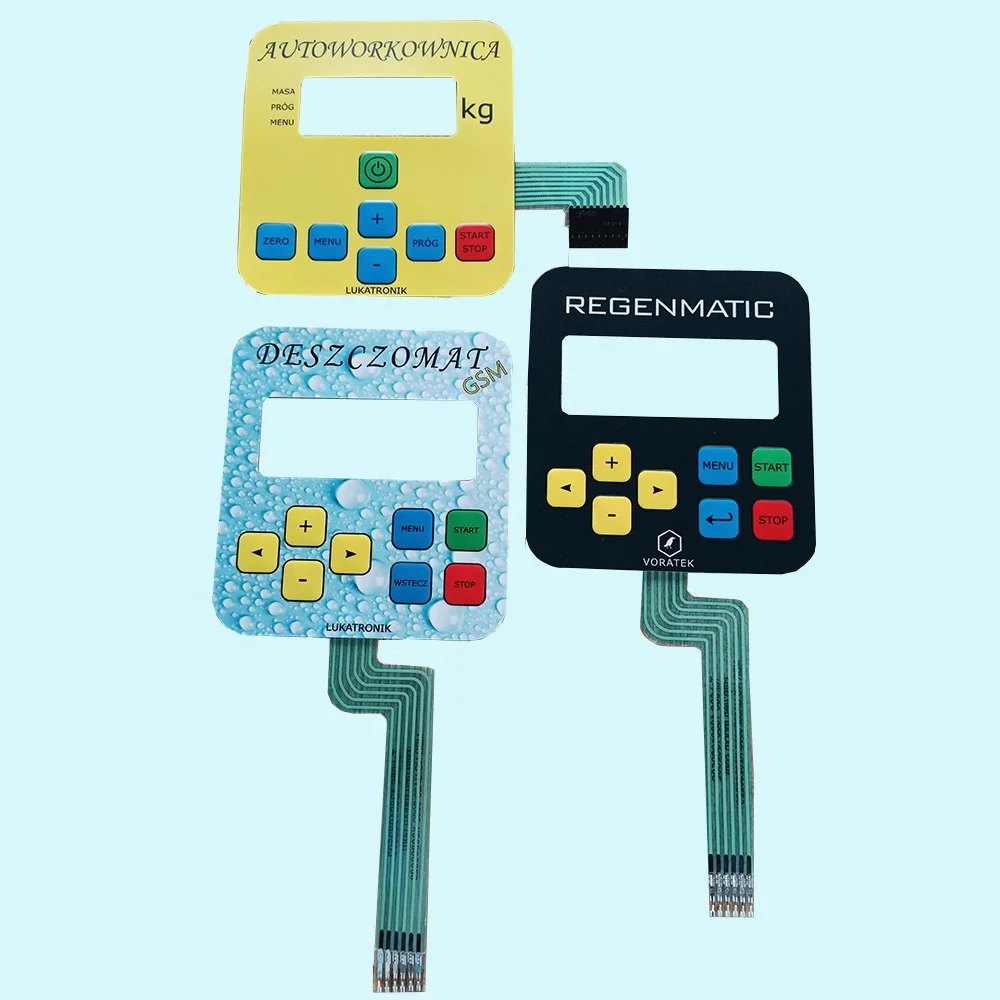Why Membrane Switches are Ideal for Durability and Performance
Wiki Article
Understanding Membrane Layer Switches: The Secret to Dependable and sturdy Controls

What Are Membrane Layer Switches?
Membrane switches are an advanced solution in the realm of interface modern technology, incorporating functionality and style effortlessly. These tools serve as an interface in between users and digital systems, integrating a number of elements right into a small format. Commonly constructed from adaptable, thin layers of products, membrane buttons are made to react to touch, making it possible for individuals to connect with machinery and digital gadgets properly.The main aspects of a membrane layer switch consist of a published circuit layer, graphic overlay, and a spacer layer that protects against unplanned activation. The visuals overlay can be tailored to reflect brand identity or customer preferences, enhancing aesthetic appeals while making sure use. Membrane switches are frequently made use of in various applications, consisting of clinical devices, customer electronics, and commercial devices, owing to their durability and resistance to environmental variables such as dampness and dirt.
One of the vital benefits of membrane buttons is their capability to hold up against deterioration, making them excellent for high-traffic environments. In addition, they are light-weight and need marginal space, enabling ingenious styles in product growth. In general, membrane layer switches stand for a effective and useful choice for modern electronic interfaces, marrying technology with user-centric design principles.
Just How Membrane Switches Over Job
The operation of membrane layer switches joints on an easy yet efficient device that converts individual input right into electronic signals. When a customer presses the switch, the leading layer flaws, allowing a conductive component in the circuit layer to make call with a matching conductive pad on the bottom of the graphic overlay.The design of membrane layer switches can vary, yet they commonly incorporate domes or tactile elements to offer comments to the individual, enhancing the general experience - membrane switch. The materials used in membrane layer buttons, such as polyester or polycarbonate, add to their sturdiness and resistance to environmental factors, including dampness and dirt. Moreover, the published circuits are usually enveloped, which shields them from wear and tear with time.
Benefits of Membrane Layer Switches

Furthermore, membrane layer buttons are known for their longevity. Constructed from durable products, they are immune to dust, wetness, and physical wear, which substantially extends their life-span compared to conventional mechanical buttons. This longevity makes them especially suitable for high-traffic atmospheres and applications calling for long life.
An additional substantial benefit is the simplicity of cleaning and maintenance. The smooth surface area of membrane layer switches over minimizes dirt buildup and is usually unsusceptible spills, making them perfect for settings that require constant sanitization.
Moreover, membrane switches use a streamlined profile, leading to a thinner style that can be incorporated right into various tools without including bulk. This function not only improves the visual allure however likewise contributes to an extra ergonomic product layout.
Applications of Membrane Layer Buttons
Functional and user-friendly, membrane switches locate applications throughout a vast array of sectors, consisting of medical devices, customer electronics, and commercial devices. In the medical field, these buttons are indispensable to devices such as diagnostic equipment, client tracking systems, and infusion pumps, where reliability and ease of cleaning are vital. Their capacity to preserve and withstand harsh settings capability makes them suitable for such applications.
In customer electronics, membrane layer buttons are used in items like microwaves, washing devices, and push-button controls - membrane switch. Their smooth layout enables intuitive user interfaces, enhancing the general individual experience while supplying toughness and resistance to tear and wear
Commercial equipment additionally takes advantage of membrane buttons, especially in control panels for machinery and automation systems. These switches provide security against dust and moisture, ensuring consistent efficiency in difficult environments. Their personalized features enable suppliers to customize them to details functional requirements, boosting efficiency and capability.
Picking the Right Membrane Change
When selecting a membrane layer switch, it is important to consider different elements that affect performance and suitability for particular applications. The key considerations consist of environmental conditions, responsive comments, resilience, and layout specs.
First, evaluate the operating atmosphere; buttons exposed to moisture, chemicals, or severe temperatures require certain products to guarantee long life and performance. Next, assess the need for tactile feedback. Depending on user communication, some applications might gain from a tactile action to verify activation, while others might favor top article a non-tactile style for aesthetic factors.
Durability is an additional crucial element; membrane buttons ought to be created to stand up to constant usage, effects, click to read and abrasion. Make sure the selected switch can endure the anticipated lifecycle, especially in high-usage circumstances.

Final Thought
In verdict, membrane changes serve as vital components in the style of reputable and resilient control systems throughout numerous sectors. The flexibility of membrane switches enables for customized services that satisfy details operational demands, enhancing their value in modern innovation.
Membrane switches over represent a critical facet of modern-day user interface style, mixing capability with resilience in numerous applications.Membrane layer buttons are a sophisticated remedy in the world of individual interface modern technology, integrating functionality and layout effortlessly. Typically constructed from adaptable, slim layers of materials, membrane layer buttons are designed to react to touch, allowing users to connect with machinery and digital gadgets properly.
The design of membrane layer switches can differ, however they often incorporate domes more info here or responsive components to supply responses to the user, improving the total experience.In final thought, membrane layer switches serve as important components in the style of reliable and sturdy control systems across various industries.
Report this wiki page